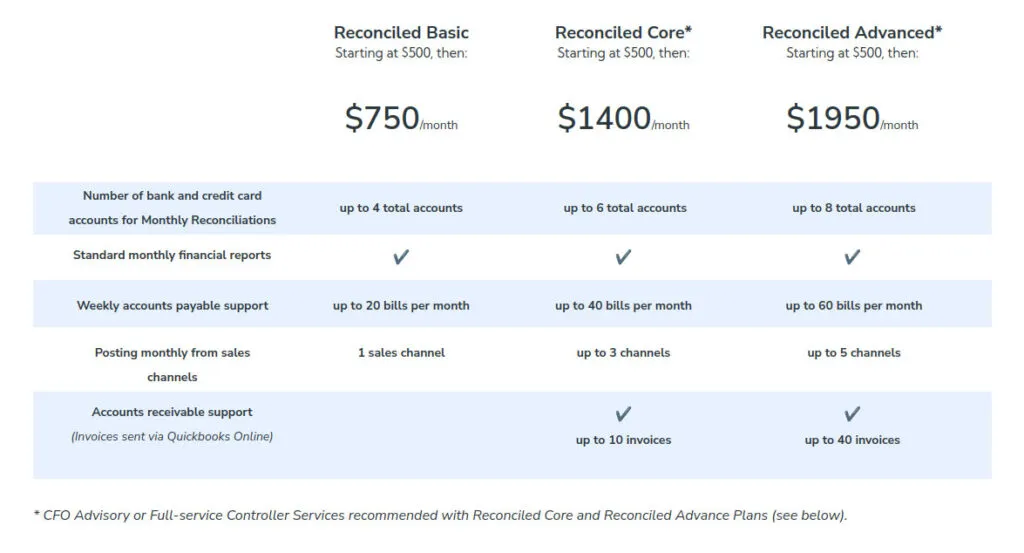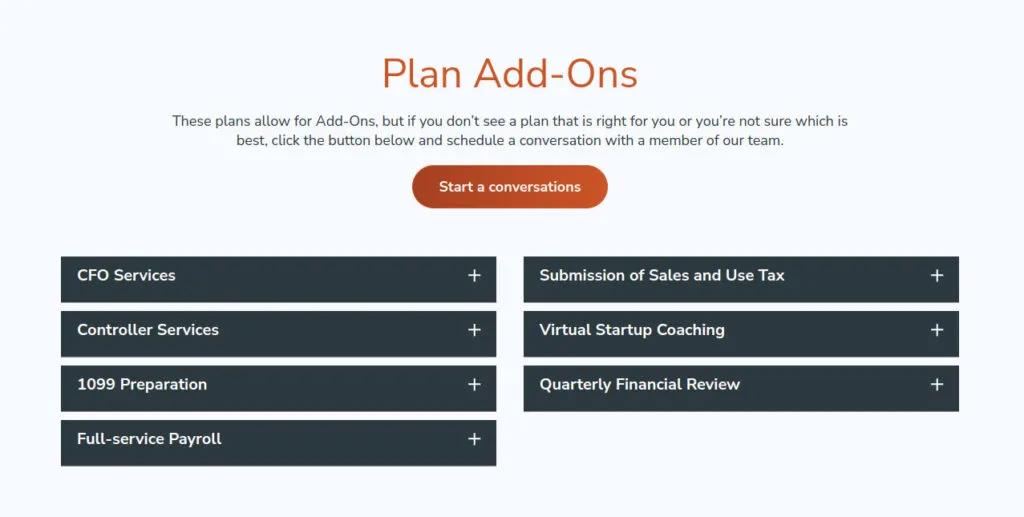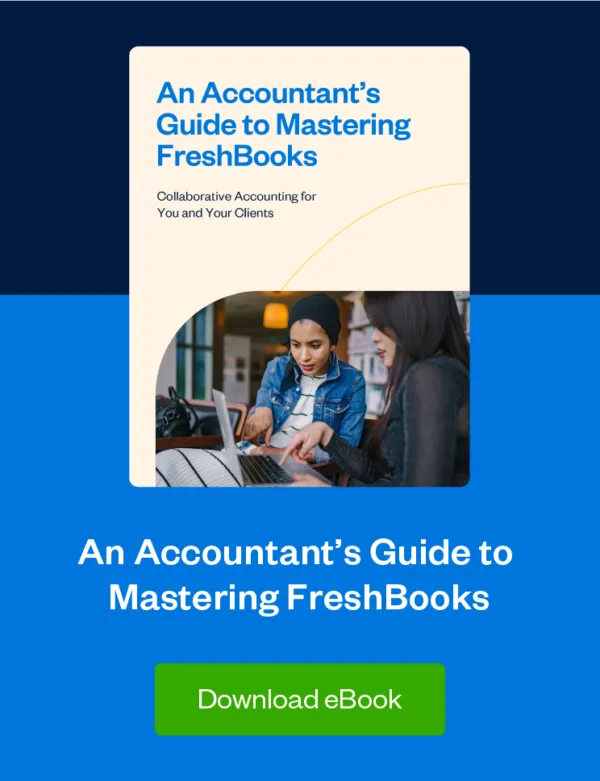For many practices, hourly billing is on its way out—and value-based pricing is here to stay. Here's what you need to know.

In recent years, accounting professionals have begun switching out their old hourly billing pricing model in favor of a different strategy—and for good reason. If you want to grow your practice, position yourself as an expert with current and prospective clients, and make more money in the process, you need to price your services according to their value.
Let’s look at value-based tiered pricing, why financial professionals need it, and how to implement it in your practice.
Table of Contents
The Disadvantages of Hourly Billing
Traditionally, accounting services would be billed by the accountant or financial professional using an hourly rate. But more and more firms have started to move away from this outdated billing method in favor of a set-fee, value-based pricing model.
“I don’t bill anything by the hour and haven’t since I started my practice,” said Megan Justice, owner of Crayon Advisory. “In a former life, as an employee, everything was billed by the hour. I was much more stressed and much less likely to meet goals and benchmarks.”
Other accounting professionals have dropped this pricing model because:
- Pricing is less transparent for clients. When clients are billed by the hour, they don’t know how much they’ll pay for a service until after the fact. This can lead to disagreements on how much time was really spent on the work.
- You’re penalized for working more efficiently. When it’s all about billable hours, you have less of an incentive to dig in and understand the client’s business, level up their skills, and optimize workflows, because it negatively affects your bottom line.
- It’s more difficult to raise your rates. When clients are focused on the hours racked up and the total on the invoice rather than the value you provide, rate increases can be harder to swallow.
What Is Value-Based Pricing?
Value-based pricing means, quite simply, basing prices on what a customer values. Compare this to cost-based pricing or cost-plus pricing strategies, where you base rates on what it costs you to produce a service, and perhaps add a markup.
Pricing your services based on their perceived value to your clients means you might charge different clients very different fees for the same service. How is this possible? Let’s look at an example.
Say Client A and Client B both hire you to build out their accounting systems and processes. Based on what you know about Client A’s relatively new business, you estimate you’ll save them at least 15 hours and $5,000 a month by setting up their accounting workflows. So, you charge them $3,000 for the service.
Because Client B is a larger, more established company, you estimate your services will bring in even more savings—to the tune of $10,000 and 35 accounting hours saved each month. Client B agrees to pay you $7,000 for services rendered because of the greater perceived value of your offering.
Tiered Pricing Models
In practice, value-based pricing can take a few different forms.
With value-based tiered pricing, for example, each tier is made up of a combination of services, deliverables, and additional features packaged together and sold to clients at its perceived value.
Look at the pricing structure from Reconciled below for an example.
Clients typically choose between 3 or more service packages, each with slightly more features, services, and perceived value than the last tier. Sometimes these packages are offered on a monthly basis—similar to the subscription model used by many software-as-a-service (SaaS) companies.
In addition to tiered service package offerings, some accounting professionals also offer standalone services on an à la carte basis (see below for another example from Reconciled).
This separate menu comes in handy when clients want to add advisory services that aren’t included in your tiered packages, for example, or if they only want to purchase one-off services without committing to an entire package.
Why Accountants Should Switch to a Value-Based Tiered Pricing Strategy
Interested in learning more about value-based tiered pricing? Here’s how accounting and bookkeeping professionals benefit from implementing this model in their practices.
Organize Your Services in a Way that Makes Sense for Clients
Accountants, bookkeepers, and other financial professionals offer a wide range of services to meet the various needs of their clients. However, reading through a laundry list of every single offering you provide can be overwhelming for prospects.
A thoughtfully-designed pricing strategy makes it easier for prospective clients to choose the service package that’s right for them while offering multiple options puts the decision-making power in the hands of the prospect. Once clients outgrow their current service tier, it becomes easier to upsell the next highest one to them.
More Transparent Pricing
When clients pay 1 set price for all of the offerings included in their chosen service package, there are no surprises and, as a result, fewer conflicts.
According to Brian Clare, owner of Blueprint Accounting, clients are “way more receptive to this pricing model because they know how much they’ll pay each month, what’s included in [their] scope, and they can budget a lot more easily because they know what their accounting and bookkeeping costs are.”
Higher Profit Margins for Your Practice
A value-based pricing strategy encourages you to work more efficiently and build deeper client relationships because you’re no longer tied to your billable hours. You’re rewarded for providing more value to your clients because you’re properly compensated for your efforts.
And because you can easily raise your rates based on the value you provide, you don’t need to take on an overwhelming number of clients to stay profitable.
Easier Budgeting and Forecasting for You
Value-based tiered pricing also allows firms to forecast their revenue and budget for their future needs. Because you know from the get-go how much money your client work will bring in, you’re better able to predict your cash flow from month to month.
Will Value Pricing Work for All Accounting Firms?
A value-based pricing model doesn’t work for everyone—and here’s why.
Offering each client a unique rate based on their situation takes much more time to figure out compared with hourly billing or fixed pricing (where you charge the same rate for a service, regardless of how long it takes to complete).
So, you may want to avoid this method if you regularly receive high volumes of work or are experiencing rapid growth. In these situations, the time it takes to determine the value you’d bring and submit your proposal may slow you down or cause bottlenecks in your client intake process.
It also takes years of experience to accurately estimate the value of a financial service and effectively communicate that to prospects. As a result, value-based pricing may not work best for financial professionals who are new to the industry or have little experience with pricing.
“I love processes and systematizing things, so when I first started, I thought I could systematize value pricing,” said Clare. “What I was really doing was fixed-fee pricing. And as I started learning more and more about value pricing and having more discovery calls with leads, I began to realize it really is more of an art than a science. And that’s where experience comes into play.”
Value pricing really is more of an art than a science.
—Brian Clare, Blueprint Accounting
But with practice comes progress. Clare’s advice for those who want to get started with value-based pricing? “You have to keep doing this even when it feels uncomfortable in order to push past your boundaries, learn something new, and get better at it. Without practice, you will never get better.”
Create a Value-Based Tiered Pricing Structure in 3 Steps
If you’ve decided that this pricing method is right for your accounting practice, follow these 3 steps for packaging bookkeeping services and more.
1. Do Your Research
To determine what combination of services and prices to include in your pricing structure, first, you’ll need to gather information about where you stand in the market. This initial market research will give you a better understanding of your customers, your business, and your competitors so you can put together a comprehensive yet competitive set of service packages.
Start by getting to know your current and prospective clients better. Ask them about their problems and business needs, look at the services they tend to hire you for, and think whether they can benefit from any additional complementary services.
Then, analyze your business finances. Review your expenses, project profitability, and revenue for insights on what services to keep and how much to charge for them moving forward.
Finally, get to know the competition. The prices your competitors charge show you how much people are willing to pay for the services they offer while studying their workflow and service packages themselves can reveal new opportunities to set yourself apart from these firms.
2. Create Your Service Packages
Use the information you gathered in the previous step to build your accounting and bookkeeping price packages.
Many companies, FreshBooks included, follow a “good, better, best” pricing approach where each consecutive tier offers additional value for an accordingly higher price. If you decide to go this route, consider what combination of services, deliverables, and features your clients would need in each tier to solve their problems and get the results they want.
Before you move on to the next step, don’t forget to define the scope of each package. You don’t want to find yourself stuck in unprofitable contracts doing work you didn’t agree to because you didn’t set your boundaries beforehand.
3. Price Your Service Offerings
Now it’s time to put prices on your accounting and bookkeeping service packages. This is no small feat in itself, considering the impact this will have on your business. Price your services too high, and business will grind to a halt. Price them too low, and your profits will disappear.
The unique problem with value-based pricing is that the rate you offer each client could be specific to their circumstances. Because there’s no tried-and-true formula for determining value-based prices, it’s important to go with what feels right to you and your client.
Justice takes a similar approach with her clients: “I consider the effort (including time) to do the task and match this with a price that I feel is fair. I don’t lay out savings or promises to the client based on money. I do provide the client with details of what services they’re receiving for the price.”
Tips for Switching to a Value-Based Pricing Model
Moving your firm’s approach from an hourly rate or a fixed-fee model to value pricing also requires a change in how you work and how you view your business. Take the below tips to heart for a more seamless transition to value-based tiered pricing.
Ask Clients the Right Questions in Your Discovery Calls
“What you think the customer needs is not always what the customer thinks is valuable, and value drives price,” shared Chris Hervochon, the owner of A Better Way CPA. “It’s important to learn how to have those conversations on the front end and ask probing questions. Generally, those questions should start with ‘what’ or ‘how.’”
By homing in on the problems your prospects want to solve and positioning yourself as the right person for the job, you’ll make it easier for them to accept your proposals.
Experiment With Your Pricing
Once you decide on your new pricing structure, consider testing it out with prospective clients to determine which combinations work best, and/or asking a few of your current clients for feedback.
Then, consider rolling out your new pricing structure slowly—focusing on 1 or 2 clients at a time or starting out with smaller, easier accounts—so you can work out the kinks and adjust your packages based on the feedback you receive.
Take your time and don’t rush the process. After all, it’ll likely take lots of trial and error before you land on your ideal pricing structure. And don’t be afraid to continue experimenting with your pricing later on.
Get a Little Help From Your Peers
Value-based pricing strategies take time, effort, and lots of strategic thinking to get right. Make the process as painless as possible by taking advantage of support from accounting professionals who have been there and done that.
The FreshBooks Accounting Partner Program is a dedicated group of progressive accountants and bookkeepers with an active online community. Sign up here to join the discussion and get guidance on value-based pricing and other practice-related questions from like-minded accounting professionals.

Written by Feli Oliveros, Freelance Contributor
Posted on June 5, 2023



 Is It Time for a Price Increase? Here’s How to Tell Your Clients
Is It Time for a Price Increase? Here’s How to Tell Your Clients Accountants: This Is How You Can Help Your Clients Get Paid Faster
Accountants: This Is How You Can Help Your Clients Get Paid Faster From Client Management to Client Relationship-Building, for Accountants
From Client Management to Client Relationship-Building, for Accountants




